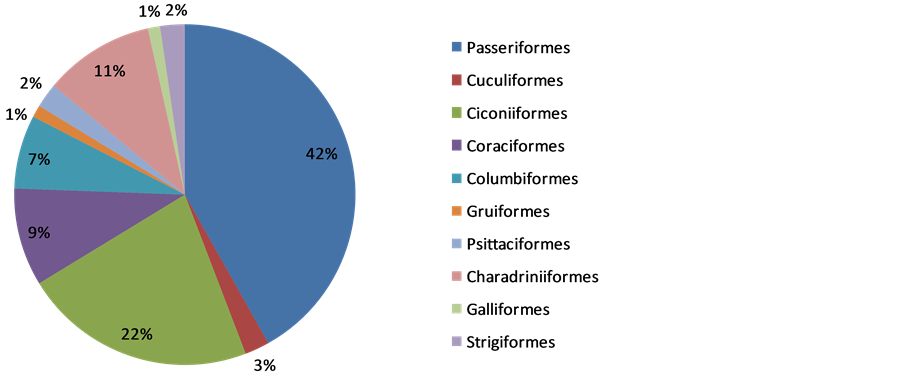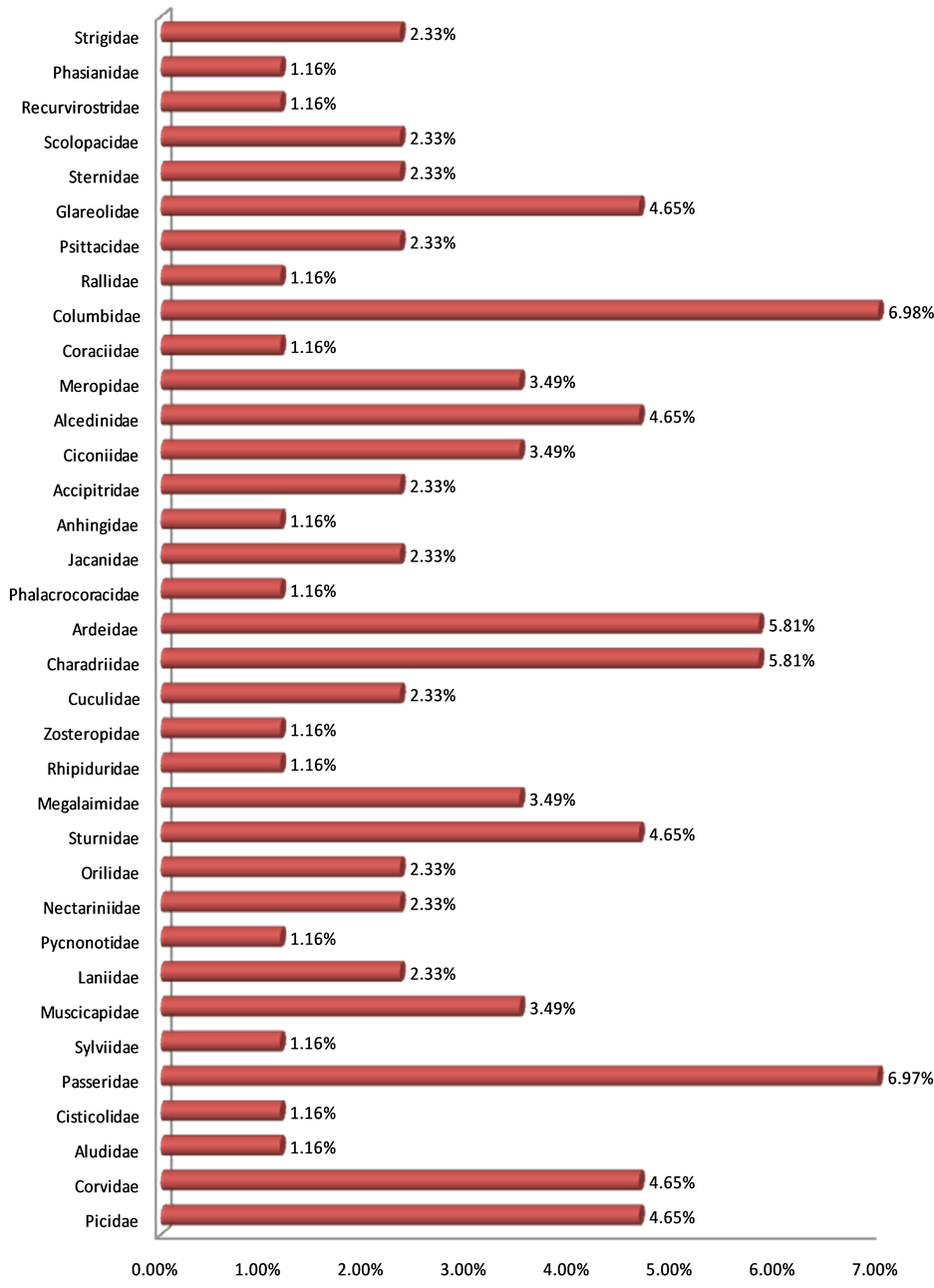1. Introduction
The Indian subcontinent is very rich in biodiversity. According to an estimate total 1300 bird species found in Indian subcontinent, out of the more than 9000 bird species of the world, over 13% of the world’s bird fauna are found in India [1] -[3] . It is suggested that the avifauna is important for the good health of the ecosystem as these birds play various roles as scavenger, pollinators and predators of insect pests [4] [5] . Digha is a seaside city in the state of West Bengal, India. It is present in East Midnapore district and at the northern end of the Bay of Bengal. The name “Digha”, was referred by Warren Hastings’s letters as Brighton of the East [6] . It is located at 21.68˚N 87.55˚E. It has an average elevation of 6 metres (22 feet) (Figure 1 and Figure 2). There are three seasons in Digha, mainly summer, monsoon, winter. Average temperature is 28˚C - 37˚C. It shows great avian diversity


Figure 2. It shows the location of Digha (Photograph taken from www.googleearth.com).
which can attract the attention of bird watchers and ornithologists. The area is surrounded by a large number of small and big ponds, estuaries and Bay of Bengal in southern side of Digha. Nearest areas of Digha are Junput, Shankarpur, Mandarmani and Talsari and these areas also contain a large diversity of avifauna. The present study is not carried out only to prepare the checklist of birds, but to find out their occurrence and to create awareness for their conservation. Of course, it is the need of the hour to conserve the rich diversity of avifauna of Digha.
2. Materials and Method
An extensive study of avifauna was carried out from October 2012 to February 2014 at the regular interval of fifteen days during most active period of birds. The data was recorded in each survey from different habitat types and the observations were carried out with the help of 10 - 12 × 50 Nikon binocular and photography was done with the Cannon SX50 HS and EOS 7D cameras with 150 - 500 mm Sigma lens. Identification of birds was done using field guides book of Grimmett and Selim Ali [1] [7] -[9] and by searching internet resources. Classification of birds was carried out with aid of published references [6] [10] . Picture of study area was taken by using website Google earth and graphs were prepared by using the Microsoft Excel. The avian species are classified on the basis of resident (R), resident migrant (RM) and migrant (M).
3. Results and Discussion
The total of 86 species of birds belonging to 10 orders and 35 families were recorded from Digha and its surrounding areas (Table 1). This is the first record in Digha avian fauna of West Bengal State which shows quite good avian diversity in this area. Some varieties of birds visit in the winter season for breeding and most of them
Table 1 . It shows orders, families, scientific names, common names and habitat of the birds. Here resident R = resident, RM = resident migrant and M = migrant.

Continued
permanently reside in this habitat due to presence of ample amount of avian food in and around Digha. Most of the avian species are resident (R), resident migrant (RM) and very few are migrant (M).
Coastal areas of Digha exhibit significant quantitative variation in avifauna. Among 10 orders of recorded birds Passeriformes consists of 42% (Figure 3) of total families out of 35 (Table 1), and it includes Picidae, Corvidae, Alaudidae, Cisticolidae, Passeridae, Sylviidae, Muscicapidae Laniidae Pycnonotidae, Nectariniidae, Oriolidae, Sturnidae, Megalaimidae, Rhipiduridae and Zosteropidae. Birds belonging to orders like Gruiformes and Galliformes constitute 1% of birds of total species surveyed (Figure 3). Passeriformes consists of 42.86%, and Cuculiformes, Psittaciformes, Gruiformes and Galliformes, Strigiformes, Columbiformes consists of 2.86% order each of total bird’s species (Figure 4).
Avifauna belonging to families Columbidae and Passeridae constitute 6.97% of the total bird species. Pycnonotidae, Rhipiduridae, Zosteropidae, Aludidae, Cisticolidae Sylviidae, Phalacrocoracidae, Anhingidae, Coraciidae, Rallidae, Recurvirostridae, and Phasianidae constitute 1.16% each of the total bird species (Figure 5). Further it was interesting to note that passerine birds dominated the diversity with 36 species as compared to non passerine (50 species) (Table 1). Family wise analysis showed that family Columbidae and Passeridae (6 species each) dominated the avian fauna followed by Charadriidae, Ardeidae (5 species each), Picidae, Corvidae, Sturnidae, Alccedinidae, Glareolidae (4 species each), Muscicapidae, Megalaimidae, Ciconiidae, Meropidae (3 species each), Laniidae, Nectariniidae, Orilidae, Cuculidae, Jacanidae, Accipitridae, Psittacidae, Sternidae, Scolopacidae, Strigidae (2 species each), Pycnonotidae, Rhipiduridae, Zosteropidae, Sylviidae, Phalacrocoracidae, Anhingidae, Coraciidae, Rallidae, Recurvirostridae, and Phasianidae Aludidae, Cisticolidae (1 species each)

Figure 3. It shows percentages (%) of Species in different families of avifauna.

Figure 4. It shows the percentages (%) of order in different families of avian faunas.

Figure 5. It shows the family wise percentages of avian fauna.

Figure 6. It shows percentages (%) of resident (R), resident-migrant (RM) and migrant (M) avifauna.
were poorly represented in the area (Table 1). Analysis of the data on residential status revealed that out of 86 species, 73% were resident, 16% resident migrant (RM) and 11% are migrant (M) (Figure 6).
4. Conclusion
The present study establishes the richness of the Digha with respect to bird fauna which is an excellent indicator of ecological health. However, the future of the avian fauna of Digha is under threat from unabated urbanisation, increased bird hunting, and pouring of hazardous agricultural chemicals into the water bodies affecting the fish eating birds and others (migratory birds mainly). Pollution and disturbances related to water sports and overcrowding of tourist are also expected to severely disturb the ecological balance (specially the avian diversity) of this area.